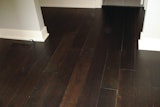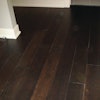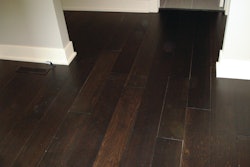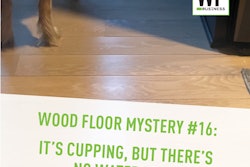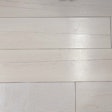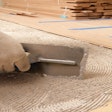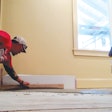The Problem
I was called to inspect a 3/4-by-2 1/4-inch select oak floor that had cupped in a new home. Cupping is very common in this geographical area, where most flooring is laid over a plywood subfloor over a crawl space, as this one was.
The Procedure
The floor contractor was primarily a resilient floor covering store that had subcontracted the installation, sanding and finishing to an installer. No one had checked the moisture content of the subfloor or the flooring. The HVAC was not functioning, even though it was December. The builder had provided space heaters. Like most jobs, the owners were in a hurry to move in. Without any acclimation, the flooring was laid, sanded and finished, and the owners moved in as soon as the finish was dry (just in time for Christmas). The HVAC was activated the day before move-in. Since northern California is an area of mild climate, spacers were not used in the floor. Building paper (double kraft) was laid under the floor as a moisture retarder. Subsequently, the floor cupped.
The Causes
There is only one cause of cupping, and that is excessive moisture. Moisture usually comes from the soil under the house, although in damp areas, it can come from the atmosphere. If the moisture comes from below, the boards will be curved up from the center of each board to a high point at the seam. If the seam peaking is caused by swelling from moisture in the air, the center of the boards will be flat and the peaking will start closer to the seam. Flooring is undercut, leaving a space between the boards at the bottom. As the flooring swells, the space at the bottom will try to close, forcing the top of the seam up. This job had all the symptoms of moisture from below.
How to Fix the Floor
The crawl space appeared to have adequate ventilation, but the soil was damp. Therefore, soil cover with 6-mil black plastic is recommended. If noticeable improvement did not occur within a month, then a French drain should be installed around the perimeter of the house 12 inches below the bottom of the foundation, before landscaping is installed, sloping at least 1/8inch to the foot to the lowest side of the house, and exiting 20 feet from the house. This lot had a good slope and would be easy to drain to the lower side of the house.
If the source of moisture is corrected before the boards become permanently deformed, cupping may subside to an acceptable level. If not acceptable, screening and recoating may satisfy the customer. If flooring is dried to a proper level and the floor is still too uneven, then sanding and refinishing may be necessary.
When a floor is installed in a patently defective environment, the installer is responsible for all problems that arise. The carpet store is responsible to the owners for the work of its subcontractors. The installer is responsible to the carpet store for repairs to his work, but he should not be required to pay for installing the plastic or French drain.
In the Future
Many carpet stores are not adequately trained in hardwood floors. Therefore, they should subcontract only to qualified installers with a binding contract that requires evidence of liability and compensation insurance, and possession of a quality moisture meter. Also, moisture content of the subfloor and flooring should be written, dated and signed on the work order and submitted with the invoice for the installation before payment is approved. The contract should require that flooring not be installed if the HVAC is not functioning and the moisture content of the subfloor is 12 percent or higher (or more than 4 percentage points higher than flooring). Flooring must be acclimated on the job under occupancy conditions for at least one week before installation. If moisture is a problem, the source must be found and corrected before installation.
Installing wood flooring is an enormous responsibility. One small mistake can cost thousands of dollars, and much more time and grief. Carpet stores must resist the temptation to use the cheapest installer, who has no insurance or assets except for the tools in the trunk of his car. The store is responsible for everything he does. Wood flooring contractors who use their own men and equipment should train and supervise their men adequately and verify that all job-site conditions meet the above requirements. These requirements should be given in writing to all estimators and installers. Callbacks are the biggest profit destroyer for most wood floor contractors. Better safe than sorry.










